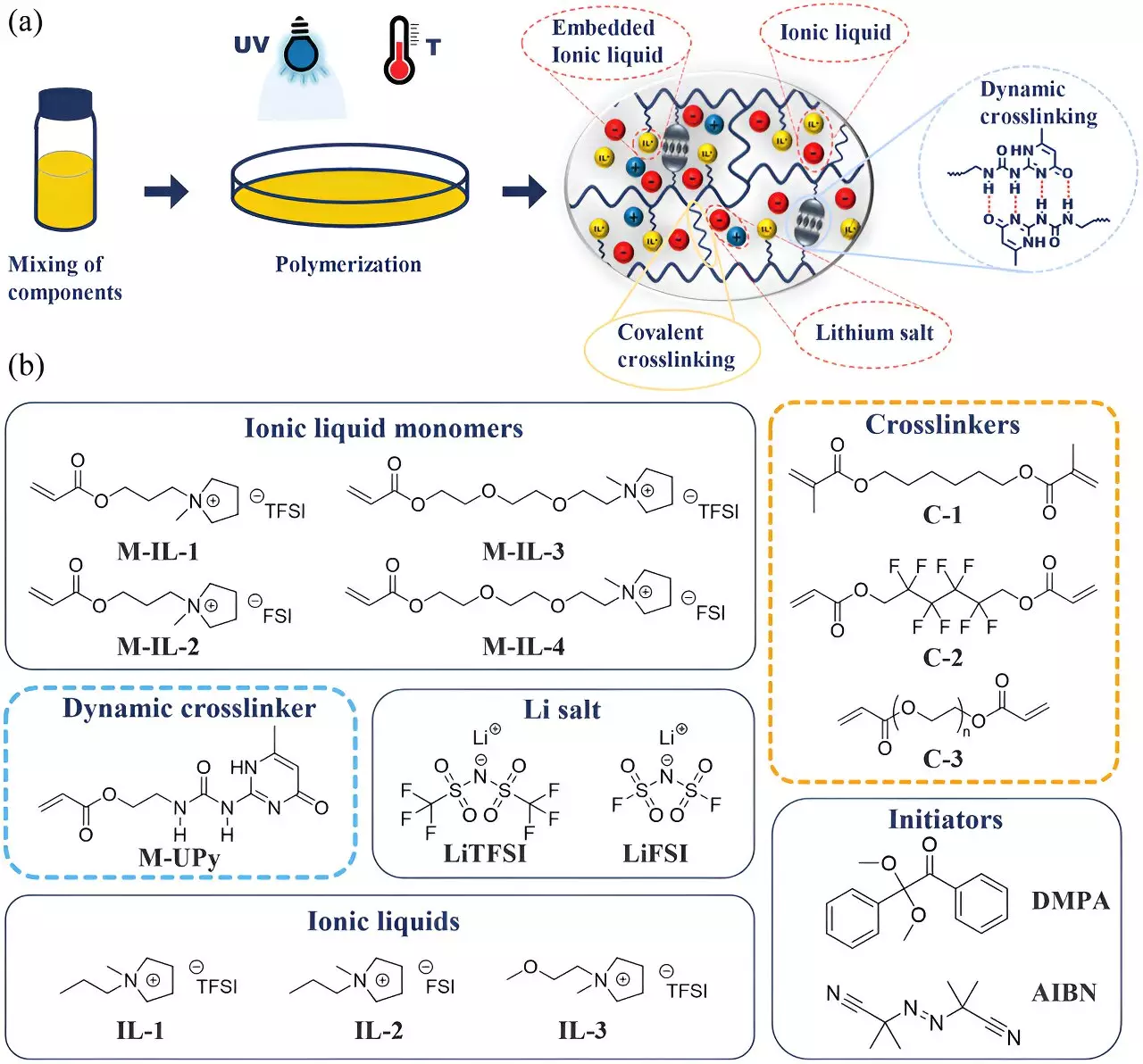In an era increasingly reliant on portable power, lithium-ion batteries have emerged as the dominant technology for energy storage across various applications. From smartphones to electric vehicles, their efficacy is widely recognized. However, despite their many advantages, safety concerns persist due to the highly volatile nature of traditional liquid electrolytes. This is where recent advancements in gel technology come into play, offering a promising avenue for enhancing battery safety and functionality.
Researchers at Martin Luther University Halle-Wittenberg (MLU) are pioneering a novel gel designed to mitigate some of the safety risks associated with conventional lithium-ion batteries. Unlike traditional electrolytes that pose a flammability hazard when subjected to physical stress or damage, the new gel-based electrolyte claims to provide not just safety but increased longevity and performance for battery systems. This research, recently published in the journal “Advanced Functional Materials,” has significant implications for the future design and application of lithium-ion technologies.
The innovation lies in the gel’s unique structure, which retains the essential characteristics of liquid electrolytes while incorporating the thermal stability and resilience found in polymers. Dr. Anja Marinow, a key figure in this research, highlights the gel’s ability to bind the electrolyte while allowing ions to circulate freely, effectively maintaining conductivity. This is a crucial advancement, as previous attempts to use gels often fell short of replicating the effective ion transfer seen in liquid electrolytes.
Furthermore, the researchers have cleverly integrated ionic scaffolding within the polymer chains, overcoming a significant barrier that typically hampers the performance of gel electrolytes. By doing so, they have managed to produce a gel that can withstand voltages exceeding 5 volts, a remarkable feat compared to the critical stability threshold of 3.6 volts seen in conventional batteries.
While gel batteries equipped with traditional electrolytes are not new — having been utilized in applications such as motorcycle starter batteries — their application with lithium-ion technology introduces an unexplored frontier. The potential industrial implications are staggering, especially as the demand for safer, more efficient batteries continues to grow alongside the increasing push for sustainable energy solutions.
The BAT4EVER project, which underpins this research, involves collaborations between multiple universities and research centers across Europe, including countries like Belgium, Luxembourg, Italy, and Spain. Such a wide-reaching consortium is significant for broadening the research’s perspective and applicability, and it aims to foster further innovation in battery technology.
In addition to enhancing safety and performance, sustainability is a vital focus of this research. The gel’s design aims to facilitate easier recycling processes when the batteries reach the end of their life cycles, promoting a circular economy approach crucial in today’s environmental landscape. As society becomes increasingly aware of the ecological ramifications of battery disposal, innovations that prioritize sustainability will become essential in guiding future developments in energy storage technologies.
The innovative gel developed by researchers at Martin Luther University Halle-Wittenberg signifies a substantial leap forward in the realm of lithium-ion battery technologies. By addressing safety issues inherent to traditional liquid electrolytes and enhancing performance capabilities, this novel approach could potentially reshape the landscape of energy storage. However, while initial laboratory results are promising, further extensive research and development are necessary to realize their industrial application fully. As future initiatives emerge, particularly within the newly forming “European Center for Just Transition Research and Impact-Driven Transfer” at MLU, the ongoing pursuit of sustainable solutions for energy storage will remain both an exciting and urgent endeavor.


Leave a Reply